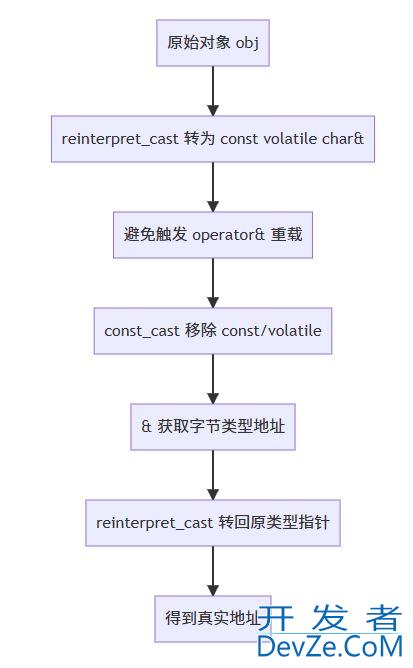C++中based for循环的实现
目录
- 范围基 for 循环(Range-based for Loop)
- 语法格式
- 例子
- 1. 遍历数组
- 2. 遍历 std::vector
- 3. 使用引用避免拷贝
- 4. 使用常量引用
- 特殊用法
- 5. 遍历 std::map 或 std::unordered_map
- 总结
在 C++ 中,based for 循环并不是一种标准的语法,可能是你想询问的实际上是 范围基(range-based)for 循环。这种循环语法是在 C++11 中引入的,旨在简化遍历容器(如数组、std::vector、std::map 等)的代码。
范围基 for 循环(Range-based for Loop)
范围基 for 循环用于遍历容器或数组中的所有元素,而不需要显式地使用索引或js迭代器。它的语法非常简洁,适用于任何可以迭代的容器。
语法格式
for (declaration : container) {
// 循环体
}
- declaration:每次迭代时,容器中android的一个元素会被赋值给这个声明的变量。可以是引用类型,以避免不必要的拷贝。
- container:可以是一个数组、容器(如
std::vector、std::list、std::map等)或其他可迭代的数据结构。
例子
1. 遍历数组
#include <IOStream>
int main() {
int arr[] = {1, 2, 3, 4, 5};
// 使用范围基 for 循环遍历数组
for (int num : arr) {
std::cout << num << " ";
}
return 0;
}
输出:
1 2 3 4 5
在这个例子中,num 会依次获取数组中的每个元素,直到遍历完整个数组。
2. 遍历 std::vector
#include <iostream>
#include <vector>
int main() {
std::vector<int> vec = {10, 20, 30, 40, 50};
// 使用范围基 for 循环遍历 std::vector
for (int num : vec) {
std::cout << num << " ";
}
return 0;
}
输出:
10 20 30 40 50
3. 使用引用避免拷贝
如果容器中的元素是较大的对象,或者你不希望拷贝元素,使用引用来避免不必要的拷贝。
#include <iostream>
#include <vector>
class Person {
public:
std::string name;
Person(std::string n) : name(n) {}
};
int main() {
std::vector<Person> people = {Person("Alice"), Person("Bob"), Person("Charlie")};
// 使用引用避免拷贝
for (Person& p : people) {
std::cout << p.name << " ";
}
retu编程rn 0;
}
输出:
Alice Bob Charlie
4. 使用常量引用
如果不需要修改容器中的元素,可以使用常量引用来提高效率(避免不必要的拷贝,并保护数据不被修改)。
#include <iostream>
#include <vector>
int main() {
std::vector<int> vec = {1, 2, 3, 4, 5};
// 使用常量引用,避免拷贝且不修改元素
for (const int& num : vec) {
std::cout << num << " ";
}
return 0;
}
输出:
1 2 3 4 5
特殊用法
5. 遍历 std::map 或 std::unordered_map
对于 std::map 或 std::unordered_map,每个元素都是一个键值对,因此迭代时需要使用 auto 来推导类型。
#include <iostream>
#include <map>
int main() {
编程 std::map<int, std::string> m = {{1, "One"}, {2, "Two"}, {3, "Three"}};
// 遍历 map(键值对)
for (conwww.devze.comst auto& pair : m) {
std::cout << "Key: " << pair.first << ", Value: " << pair.second << std::endl;
}
return 0;
}
输出:
Key: 1, Value: One
Key: 2, Value: TwoKey: 3, Value: Three
总结
范围基 for 循环 是一种简洁、直观的方式来遍历容器,它:
- 简化代码:不需要显式地使用迭代器或索引。
- 提高可读性:代码更加简洁易懂。
- 减少错误:避免了手动操作索引或迭代器。
- 性能优化:可以使用引用来避免不必要的元素拷贝,尤其是在处理较大数据类型时。
使用范围基 for 循环,可以极大地提高代码的简洁性和可读性,尤其是在需要遍历容器时。
到此这篇关于C++中based for循环的实现的文章就介绍到这了,更多相关C++ based for循环内容请搜索编程客栈(www.devze.com)以前的文章或继续浏览下面的相关文章希望大家以后多多支持编程客栈(www.devze.com)!






 加载中,请稍侯......
加载中,请稍侯......
精彩评论